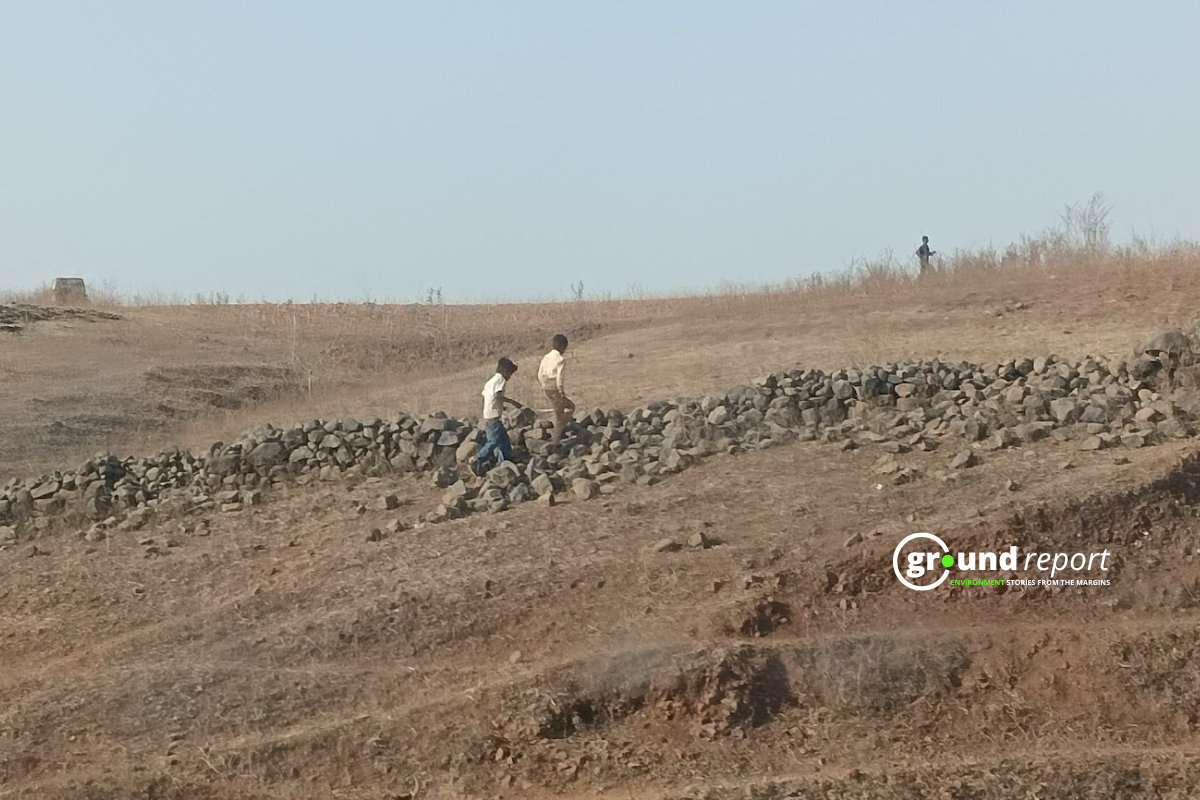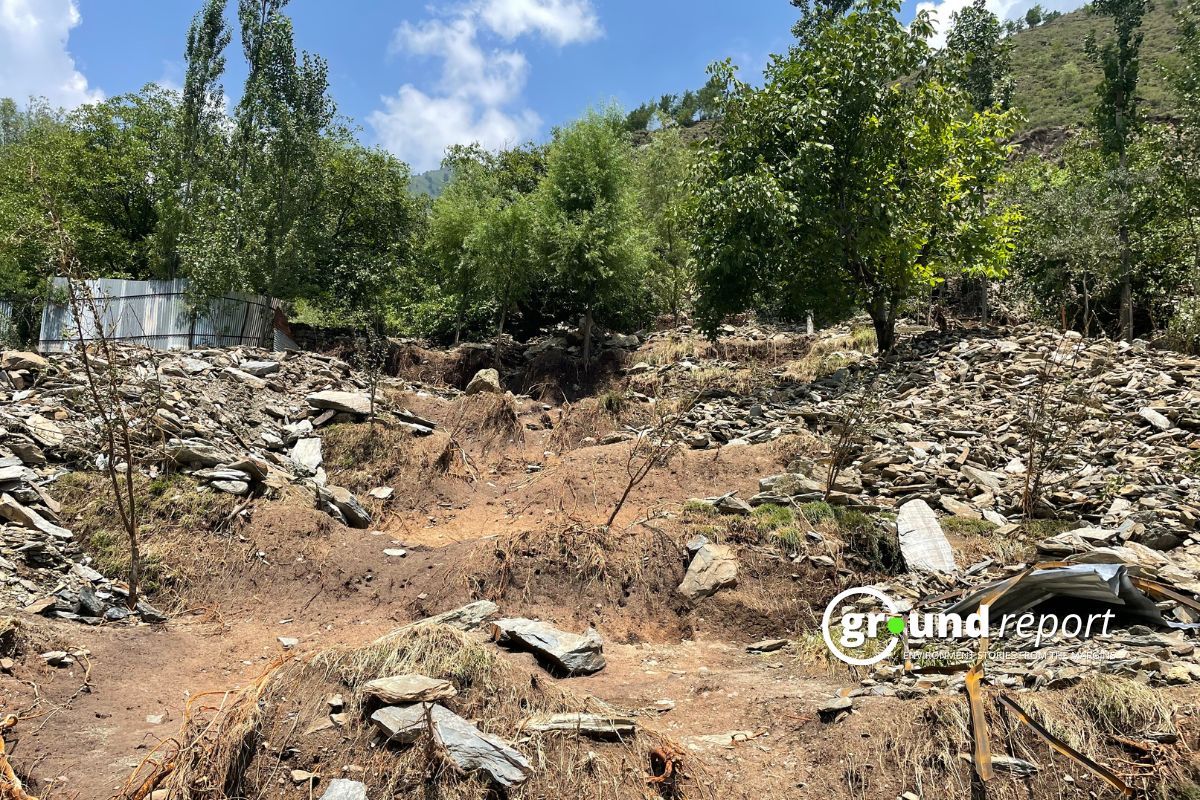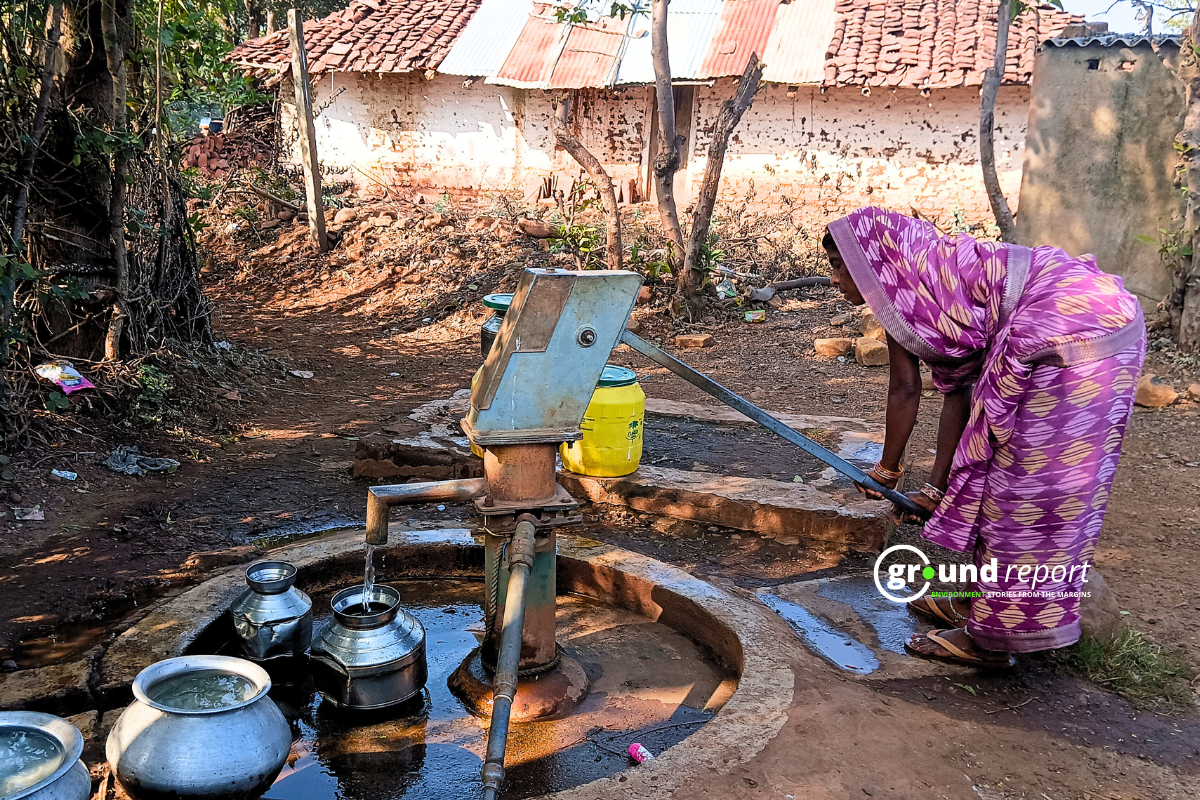An unprecedented new analysis by the Centre for Science and Environment (CSE) reveals that Indian cities are grappling with a potent combination of factors fueling extreme urban heat stress – rising temperatures, escalating humidity levels, and increasing land surface heat. This deadly mix is converging to create hazardous conditions that threaten public health and quality of life in the concrete jungles.
The Urban Lab at CSE carried out a comprehensive assessment of air temperature, land surface temperature and relative humidity across six megacities – Delhi, Mumbai, Kolkata, Hyderabad, Bengaluru and Chennai. The time frame spans summer seasons from January 2001 till April 2024, providing insights into regional heat stress variations.
The analysis focused on day and night temperature trends, humidity levels, seasonal variations, land surface temperature patterns and growth in built-up areas. It leveraged data from IMD weather stations, NASA’s MODIS land surface observations, USGS satellite imagery and complex geospatial calculations.
The study shatters the notion that rising air temperatures alone drive the urban heat crisis. Instead, it highlights the complex interplay between air temps, land surface temps, and relative humidity that culminates in acute thermal discomfort. Even cities experiencing a marginal air temperature decline can face intensifying heat stress due to humidity and surface heat factors.
“Assessing changing trends in heat, humidity, land surface temperature, along with day and night variation is crucial for developing comprehensive heat management plans,” said Anumita Roychowdhury, CSE’s executive director of research and advocacy. “This allows implementing emergency measures during heatwaves and longer-term strategies like expanding green cover and enhancing buildings’ thermal comfort.”
The Deadly Humidity Escalation A central finding is the significant increase in average relative humidity levels across most megacities over the last decade compared to 2001-2010. This 5-10% humidity surge has grave implications, as it compromises the human body’s natural cooling mechanism of sweating.
When humidity is high, sweat evaporation is limited, increasing the risk of heat stress and illnesses at relatively lower temperatures. The analysis found the heat index – which factors humidity into perceived heat – has risen faster than ambient temps in all six cities studied.
Hottest Combo: Chennai, Kolkata, Mumbai
- Chennai’s summer average heat index was a scorching 37.4°C, with humidity contributing a staggering 6.9°C on top of air temperature.
- Kolkata’s heat index averaged 36.5°C, humidity adding 6.4°C.
- Mumbai’s stood at 34.3°C, humidity boosting it by 5°C.
Disturbingly, the data shows monsoons have become more thermally uncomfortable than pre-monsoon periods in Delhi, Mumbai, Kolkata and Chennai, with higher heat indices during the monsoon season.
The Unrelenting Night Heat Traditionally, nights provided respite from daytime heat. But the study indicates cities are no longer cooling adequately at night compared to 2001-2010 levels. Key examples:
- In Delhi, night cooling of land surface temps has decreased by 9%
- In Mumbai, this night cooling effect has plunged by 24%
“Hot nights are extremely dangerous, denying recovery from daytime heat exposure,” warned CSE’s Avikal Somvanshi. “Studies predict a much higher mortality risk from excessive night heat than suggested by climate models focusing on daily averages.”
Urban Heat Island Effect
Another alarming trend is the intensifying urban heat island effect, where city cores are considerably warmer than surrounding areas due to reduced ventilation, heat-trapping buildings, human activities, and lack of greenery. This effect is more acute at night when:
- Delhi’s core cools 3.8°C less than peri-urban zones
- In Bengaluru, the core is 2.5°C warmer than outskirts
Concretization Compounds the Crisis A direct correlation emerges between increasing built-up urban areas and rising heat stress across cities. Chennai and Bengaluru have seen their built-up areas more than double in two decades, while Mumbai’s has grown over 13 percentage points.
Conversely, green cover declined in Mumbai, Kolkata and Chennai – exacerbating heat islands, though the study notes increasing green spaces moderates daytime heat better than night temperatures.
City-wise Highlights
Delhi
| City | Points |
|---|---|
| Delhi | – Temperature Change: Cooler than previous averages; March-April 2024 was 3°C cooler than the average of 2014-23. Summer-time has a 0.6°C lower decadal average ambient air temperature (2001-10 vs. 2014-23). |
| – Humidity Change: Relative humidity has increased by 8% (2001-10 vs. 2014-23). | |
| – Heat Stress: High humidity responsible for adding 3.3°C of heat stress. | |
| – Night Cooling: Diurnal cooling down of land surface temperature between day and night is down by 9%. | |
| – Urban Heat Island Effect: At night, peri-urban areas cool down by 12.2°C, while the city core cools down by only 8.5°C, making the city core 3.8°C warmer than peri-urban areas. | |
| – Built-Up Area Impact: Built-up area increased from 31.4% in 2003 to 38.2% in 2022. Green cover increased from 32.6% in 2003 to 44.2% in 2022. This increase in green cover has impacted daytime temperatures but not night-time temperatures and the increasing heat index. | |
| – Heat Index During Monsoons: Average heat index during monsoons is 9.4°C higher than during pre-monsoons. |
Mumbai
| City | Points |
|---|---|
| Mumbai | – Temperature & Humidity Change: Summer-time registered a 0.6°C increase in decadal average ambient air temperature; relative humidity increased by 7% (2001-10 vs. 2014-23). |
| – Heat Stress: High humidity adds an average of 5°C of heat stress; heat index increased by 7%. March-April 2024 was similar thermally to the average of 2014-23. | |
| – Thermal Comfort: No thermal distinction between monsoon and pre-monsoon; both are more thermally uncomfortable by over 2°C. | |
| – Night Cooling: Diurnal cooling down of land surface temperature between day and night is down by 24%. | |
| – Urban Heat Island Effect: During daytime, city core is 3.5°C cooler than peripheries; at night, city core is 0.4°C warmer. | |
| – Built-Up Area Impact: Built-up area increased from 38.4% in 2003 to 52.1% in 2023. Green cover decreased from 35.8% in 2003 to 30.2% in 2023. |
Kolkata
| City | Points |
|---|---|
| Kolkata | – Temperature & Humidity Change: No significant change in decadal average ambient air temperatures; relative humidity increased by 5% (2001-10 vs. 2014-23). |
| – Heat Stress: High humidity adds an average of 6.6°C of heat stress; decadal heat index risen by 3.5% on average. | |
| – Danger-Level Heat Index Days: Days with daily heat index exceeding 41°C have tripled compared to 2001-10. | |
| – Thermal Comfort: Average heat index during monsoons is 3.5°C more than in pre-monsoons. | |
| – Night Cooling: Cools down at night at the same rate as in 2001-10; diurnal cooling down of land surface temperatures has a difference of 6°C on average. | |
| – Urban Heat Island Effect: During daytime, core is 1.8°C warmer than peripheries; at night, difference is 1.2°C. | |
| – Built-Up Area Impact: Built-up area increased from 70% in 2001 to 80.1% in 2023. Green cover decreased from 15.2% in 2001 to 14.5% in 2023. |
Hyderabad
| City | Points |
|---|---|
| Hyderabad | – Temperature & Humidity Change: No appreciable increase in temperature; relative humidity increased by 10% (2001-10 vs. 2014-23). |
| – Heat Stress: High humidity adds an average of 1.5°C of heat stress. | |
| – High Temperature Days: 30-90 days in summer with temperatures exceeding 37°C. | |
| – Thermal Comfort: Average heat index during monsoon is about 3°C less than pre-monsoon. | |
| – Night Cooling: Diurnal cooling down of land surface temperatures between day and night is down by 13%. | |
| – Urban Heat Island Effect: During daytime, core is 0.7°C cooler than peripheries; at night, core is 1.9°C warmer. | |
| – Built-Up Area Impact: Built-up area increased from 20.6% in 2003 to 44% in 2023. Green cover increased from 8.9% in 2003 to 26.5% in 2023. |
Bengaluru
| City | Points |
|---|---|
| Bengaluru | – Temperature & Humidity Change: Summer-time registered a 0.5°C increase in decadal average ambient air temperature; relative humidity stable. March-April 2024 was 3°C hotter compared to the average of 2014-23. |
| – Heat Stress: Humidity adds an average of 0.6°C of heat stress; heat index increased by 2%. | |
| – Thermal Comfort: Average heat index during pre-monsoon is 3°C more than during monsoons. | |
| – Night Cooling: Diurnal cooling down of land surface temperature between day and night is down by 15%. | |
| – Urban Heat Island Effect: During daytime, core is 0.6°C cooler than peripheries; at night, core is 2.5°C warmer. | |
| – Built-Up Area Impact: Built-up area increased from 37.5% in 2003 to 71.5% in 2023. Green cover increased from 18.8% in 2003 to 26.4% in 2023. |
Chennai
| City | Points |
|---|---|
| Chennai | – Temperature & Humidity Change: Summer-time rise of 0.4°C in decadal average ambient air temperature; relative humidity increased by 5% (2001-10 vs. 2014-23). March-April 2024 was 1°C hotter compared to the average of 2014-23. |
| – Heat Stress: High humidity adds an average of 6.3°C of heat stress; heat index increased by over 5%. | |
| – Danger-Level Heat Index Days: Days with daily heat index exceeding 41°C have tripled compared to 2001-10. | |
| – Thermal Comfort: No thermal distinction between pre-monsoon and monsoon; both are now equally hot and muggy. | |
| – Night Cooling: Diurnal cooling down of land surface temperature between day and night is down by 5%. | |
| – Urban Heat Island Effect: During daytime, core is 0.8°C warmer than peripheries; at night, core is 0.9°C warmer. | |
| – Built-Up Area Impact: Built-up area increased from 30.7% in 2003 to 73.5% in 2023. Green cover decreased from 34% in 2003 to 20.3% in 2023. |
Trends in heat stress will worsen with climate change
The Intergovernmental Panel on Climate Change (IPCC) highlights in its Sixth Assessment Report (AR6 WG-I) that the frequency, intensity, and duration of heat extremes and heat waves have significantly increased since 1950. This trend is projected to continue, even if global warming stabilizes at 1.5°C. According to Roychowdhury, combining climate change projections with urban growth scenarios leads to a high confidence that future urbanization will amplify the projected increase in local air temperatures.
In urban centres, the IPCC’s AR6 WG-II notes with confidence that hot extremes, including heat waves, have intensified. Urban areas often experience air temperatures several degrees warmer than surrounding regions, particularly at night, due to the urban heat island effect. This effect can add up to 2°C to local warming, reducing cities’ adaptive capacities and increasing risks. Factors contributing to this include reduced ventilation, heat-trapping by densely packed tall buildings, direct heat generation from human activities, heat-absorbing properties of urban materials like concrete, and limited vegetation.
The Way Forward CSE underscores the urgent need for city-specific heat management plans targeting all heat generators like concrete surfaces, barren lands, vehicles, and industries. Enhancing green cover, waterbodies, thermal comfort of buildings and reducing waste heat are key strategies.
“This is about sustained action through the year to heat-proof cities, not just summer responses,” said Somvanshi. “Tracking annual and diurnal trends in temperature, humidity and overall heat index is vital.”
The analysis warns that climate change will worsen urban heat trends, amplifying local temperatures by 2°C or more due to urban heat island impacts – necessitating adaptation through concerted mitigation efforts.
As the deadly urban heat combo intensifies, Indian cities have a narrow window to implement comprehensive, data-driven heat action plans to secure public health and livability.
To effectively manage and mitigate the impacts of rising temperatures and heat waves in urban areas, it is crucial to adopt a comprehensive approach. Key strategies include targeting major heat sources such as concrete surfaces, barren lands, and waste heat from vehicles, industries, and cooling devices. This involves implementing guidelines and action plans to reduce thermal load on buildings and enhance thermal comfort.
Furthermore, it’s imperative to consider both day- and night-time temperatures in health emergency actions. Addressing the heat problem requires focusing on a complex set of indices beyond daily maximum temperatures, taking into account factors like relative humidity.
Strengthening scientific tracking through the development of a comprehensive database on ambient heat, surface heat absorption, land surface temperatures, and changing land use is essential. Utilizing satellite technology can help monitor these factors effectively and integrate the data into policy decisions.
Keep Reading
Part 1: Cloudburst in Ganderbal’s Padabal village & unfulfilled promises
India braces for intense 2024 monsoon amid recent deadly weather trends
Support us to keep independent environmental journalism alive in India.
Follow Ground Report on X, Instagram and Facebook for environmental and underreported stories from the margins. Give us feedback on our email id greport2018@gmail.com.
Don’t forget to Subscribe to our weekly newsletter, Join our community on WhatsApp, and Follow our YouTube Channel for video stories.










